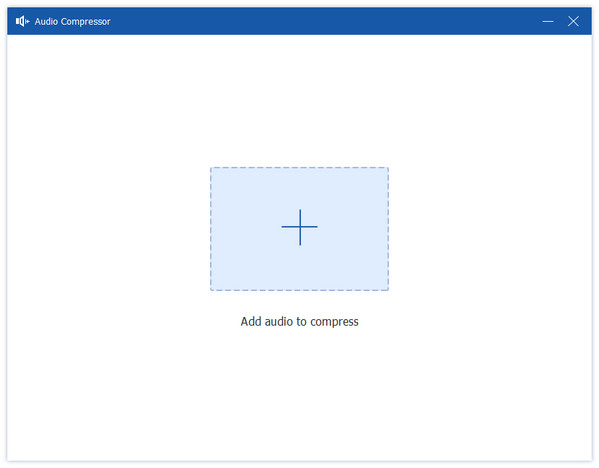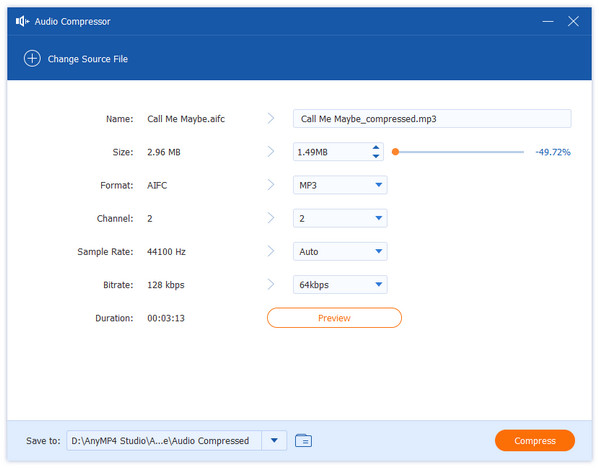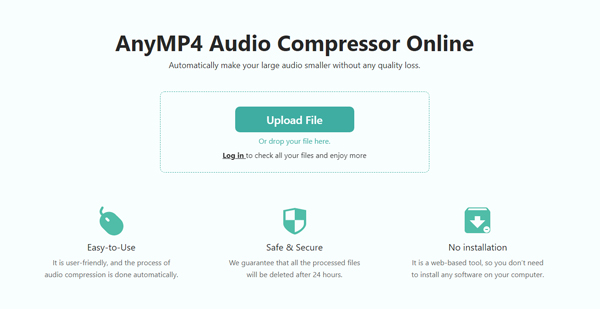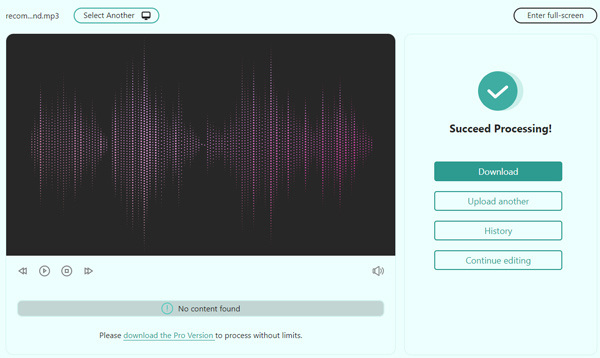Normalizing is a technique for boosting the volume of an audio file by the most significant amount achievable without clipping. A better approach is dynamic range compression. This is because many audio files have a few very loud stray peaks, making it hard to increase the overall gain without clipping. We want to lower the level of those peaks, giving us more headroom to boost the gain of the remaining audio.
In this post, we'll demonstrate how to create a simple limiter, a compressor with a much steep compression ratio that can be used on various audio genres, including spoken word, to achieve a beautiful steady volume level throughout the audio files you have. Without any discussion, here is the best way to compress audio using NAudio Capture.

Yes. NAudio Capture can compress our audio files. As an overview, NAudio is a free open-source.NET audio toolkit that includes some classes for interacting with audio files and devices in Windows.
Its main features are as follows: handling compressed WAV files and utilizing Them to handle and process MIDI files on a large scale. It also has the possibility of receiving MIDI events, reading a SoundFont, and encoding OGG files. These critical features bring our audio files into the amazing compressed and modified audio elements we want.
That said, NAudio Capture is a great tool we are looking for in compressing different kinds of audio like WAV and OGG. However, the tool contains a few confusing features that are not compatible with novice users. For that, we provide an excellent guide in alleviating this confusion, plus an alternative to the tool for a more straightforward process.
Although NAudio's ISampleProvider interface is appropriate for our limiter effect, I've constructed an Effect base class to make it easier to implement effects. The Effect class implements ISampleProvider and employs the decorator pattern to bring in the source ISampleProvider. Derived effect classes must implement the Sample method, which is called for each stereo or mono sample frame. Optional methods include ParamsChanged, which is called whenever the values of the effect parameters change to allow recalculation of any constants, and Block, which is called before each Block of samples is processed for efficiency.

Compared with the common audio compression, NAudio Capture compressed audio files in a different way. For example, the limiter we've decided to transfer comes with REAPER and is built by Schwa, the creator of a slew of reasonably practical effects. The only changes I made were to allow for more excellent gain boost settings and to set the brick wall default to -0.1dB.
It couldn't be simpler to use the limiter. In this example, we read the input file with an AudioFileReader. This supports multiple file types, including WAV and MP3. Next, we construct a SoftLimiter instance and set the Boost parameter to the desired amount of boost. We're seeking 12dB of gain here. This indicates that audio below -12dB will be boosted without clipping, whereas audio beyond -12dB will be clipped.
Finally, we use WaveFileWriter.CreateWaveFile16 to save the compressed audio as a 16-bit WAV file. You can use other NAudio-supported output file formats, such as the MediaFoundationEncoder for MP3.

It is evident that NAudio Capture is very complicated to use and requires a lot of time to master. That is why assertiveness is all we need. See two of the easiest tools to use to compress audio rather than NAudio Capture.
AnyMP4 Video Converter Ultimate is the best program we can utilize as an alternative to NAudio Capture. Through the compression capability, we can now adjust our audio elements. Unlike the tool above, this audio compressor is user-friendly and compatible with new users due to its confusion-free features.
Recommendation
1. Before you begin, download the AnyMP4 Video Converter Ultimate application.
Secure Download
Secure Download
2. When we run the software, we are greeted by an excellent interface that explains how it works. Then navigate to the Toolbox and select the Audio Compressor. Our audio files will be compressed.

3. Please click the Add button in the center of the interface once finished. You can choose the audio that has to be changed before you use your audio in your itinerary.

4. A windows tab for the Size selection will then open. This program is required for compressing your audio file by changing each component. It is recommended to press the Compress button as long as the procedure is followed.

That is the evidence that AnyMP4 Video Converter Ultimate is much easier than NAudio Capture. Through this tool, we can now ease the confusing method of converting the audio files we have.
Separately, we offer a fantastic online compressor for important audio files, enabling seamless audio emailing. AnyMP4 Audio Compressor Online Internet is a practical and effective online program available to all users. This tool immediately decreases the size of your MP3 file without asking you to install any software. It merely takes a couple of mouse clicks. Check to see whether you have what it takes.
1. Navigate to the AnyMP4 Audio Compressor Online website. The Upload File button is positioned in the utility's center. This feature can handle any essential audio files.

2. Allow time for your colossal audio file to load. The audio target size can then be selected using the friendly parameter settings.

3. After that, select the Compress option to save your audio files for sending over Gmail.

This online tool is much easier to compress your OGG or WMA audio files than the NAudio Capture. However, it is also limited in features, unlike AnyMP4 Video Converter Ultimate. Overall, this tool is effective despite it.
1. What is a Limiter in NAudio Capture?
We use a limiter which is effectively a compressor with a very steep compression ratio, to achieve a good, even volume level throughout a range of audio genres, including music and audio recordings. It is o1ne of the essential factors for NAudio Capture to make the compression possible.
2. Does NAudio Capture support compressing WAV and OGG?
Yes. Compressing OGG and WAV using NAudio Capture is very welcome. It is one of the features of NAudio that supports tremendous audio formats in compressing. These audio formats include MP3, AAC, WAV, OGG, and more.
3. Is NAudio Capture suitable for novice users?
No. NAudio Capture is an excellent tool for compressing audio. Yet, due to its complexity, beginners will have a hard time learning the basic methods of utilizing this tool. That is why new users suggested using an alternative like AnyMP4 Video Converter Ultimate for an easier way to make the process.
To conclude, NAudio Capture might be good at compressing audio, but it has some complicated steps. That is why an alternative is great to help us continue our audio compression process. You can try AnyMP4 Video Converter Ultimate now for an outstanding feature.